In today’s article, we will talk about the mandala flowers meaning. Ever since ancient cultures, both European and Asian, mandala flowers have always attracted attention with their symbolism and design.
What is it that makes these flowers so interesting? What kind of symbolism do they represent and what makes them so special? Each color, shape, and line carries its own mandala flowers meaning, spiritual symbolism, and message.
Below we will find out more about the mandala flowers meaning, symbolism, spiritual meaning, and more. Let’s check it out.
What Is Flower Mandala?
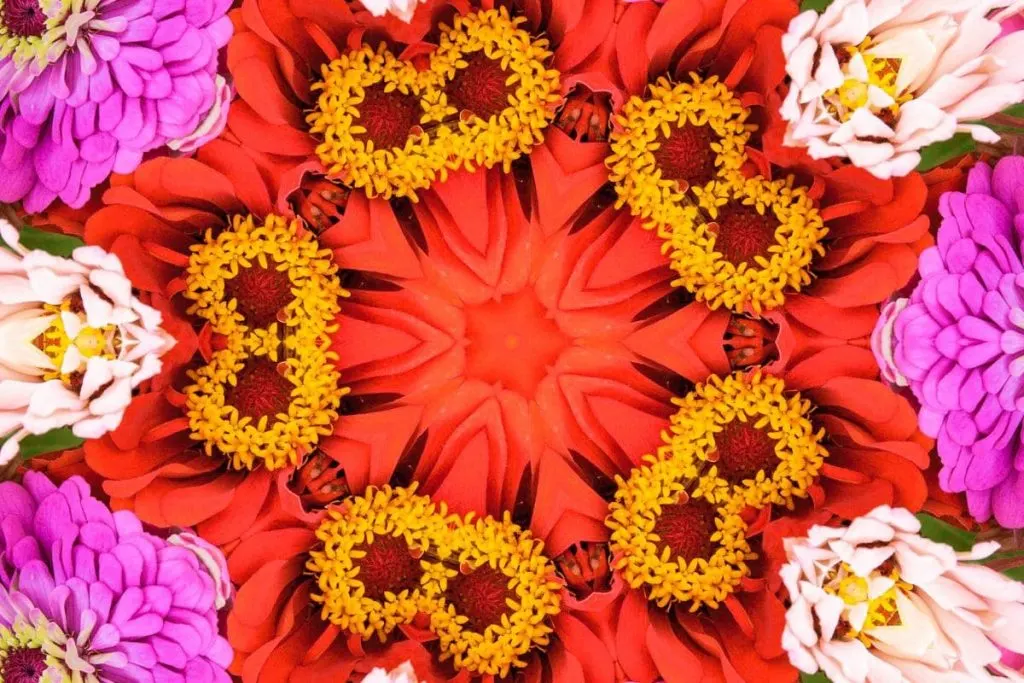
Mandalas are circular designs that symbolize that life never ends. Many mandalas have a strong spiritual meaning for a particular person or group of people.
Hindus believe that they were the first to use mandalas as a spiritual tool, but mandalas have been known for centuries. The most famous mandalas are those made by Buddhists.
What Is Mandala Flowers Meaning?
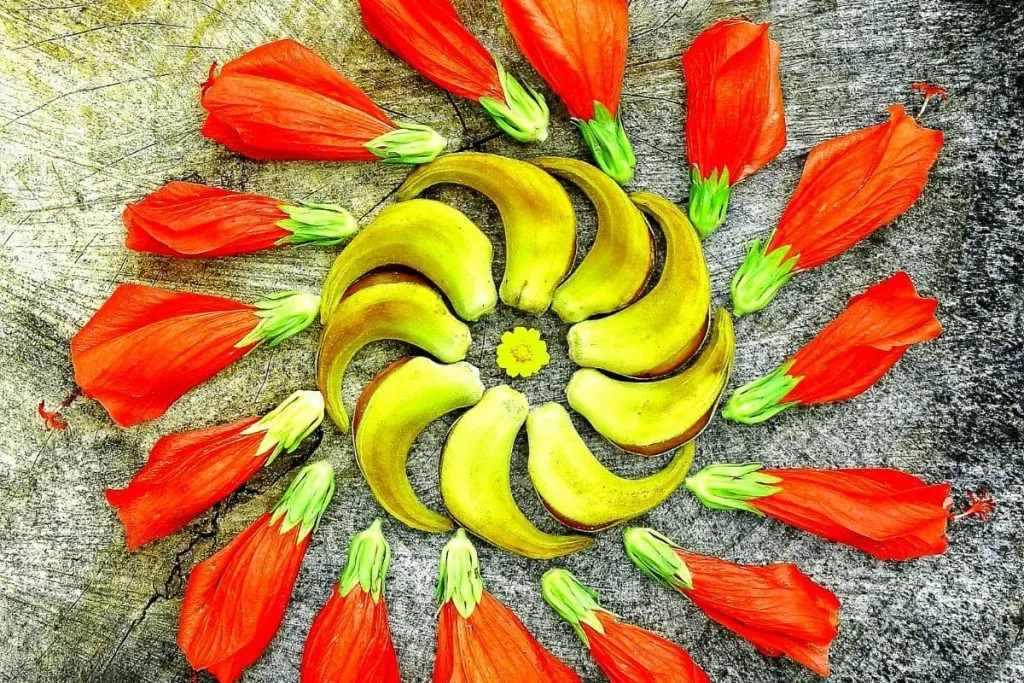
Word mandala – “circle” in Sanskrit.
It doesn’t matter if we’re talking about lotus flower mandala, lotus mandala, or geometric mandalas such as circle mandalas. By the way, the lotus is the national flower of Vietnam.
Their symbolism is always the same in the spiritual world. It presents peace, calmness, and the path of individuals through their life. etc.
The symbolism that mandalas represent can have a very important meaning for people of all religions and should not associate with one particular one.
In some cases, they show the path a person should follow in life. Mandala is also synonymous with sacred space.
In Sanskrit, this word means circle and considers the meaning of sacred space. It also translates as a magical or ritual circle.
Mandalas in the Buddhist tradition are mostly paintings or drawn structures that have a ritual purpose. They serve as an aid for meditation and concentration, while in architecture they are in use as a blueprint for building temples.
What Is The Meaning Of “Flower Of Life” In Mandala?
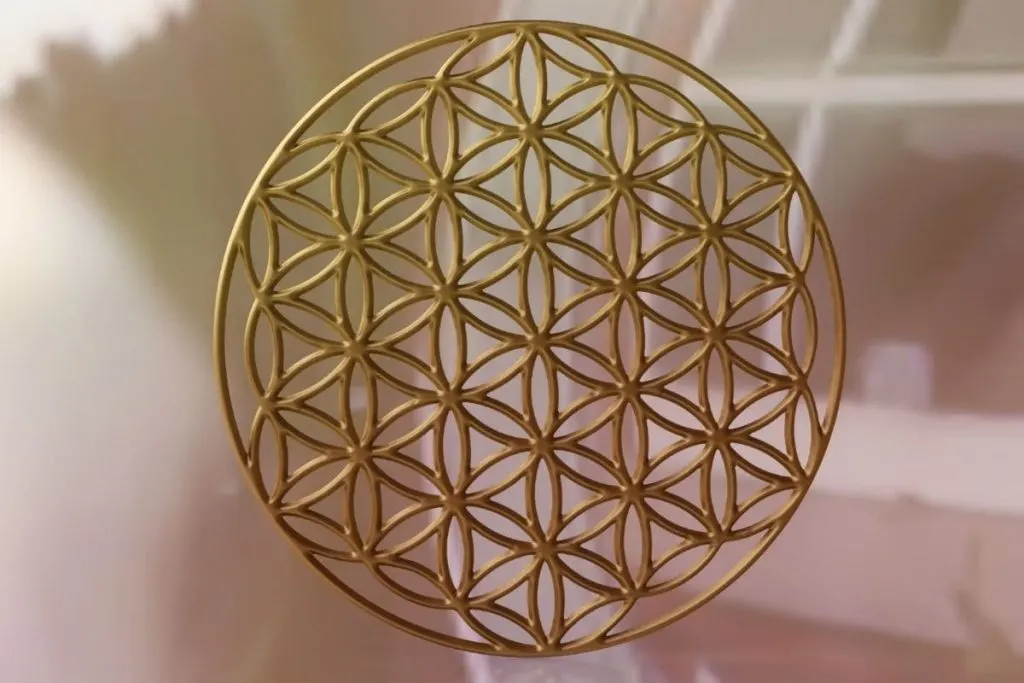
The symbol of the Flower of Life is sacred in many cultures. In fact, this mystical symbol you can find in all major religions throughout the world.
The Flower of Life is over 6,000 years old and consists of several concentric, equal, overlapping circles.
Many believe that this symbol contains the very core of information about the secrets of the universe and all living beings.
The oldest record of the Flower of Life is said to have been found in the palace of King Ashurbanipal.
The Flower of Life has been kept ‘sacred’ all over the world since ancient times. There is almost no civilization that did not consider it one of the sources of all information about our battle.
Flower Of Life Sacred Geometry: What’s The Symbolism In Mandala Flowers?
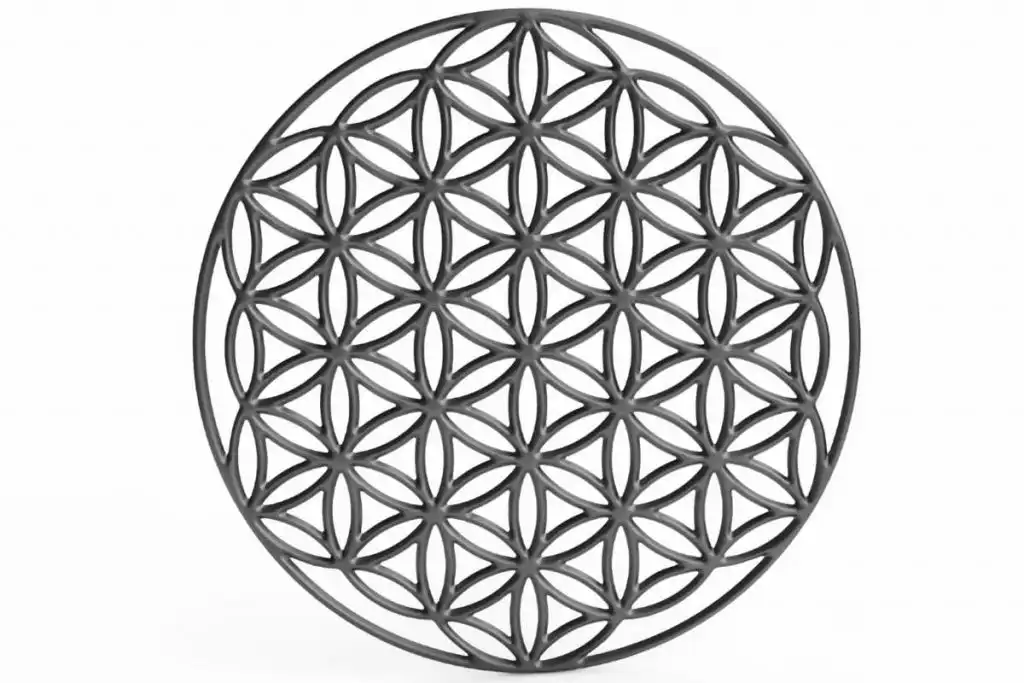
As a symbol of spirituality in Buddhism and Hinduism and translated as a circle, the mandala symbolizes a sacred geometric shape. This shape has no beginning and no end.
The same shape appears frequently in nature. We can find it all around us: the shape of the Sun, the Moon, flowers, snails’ houses, snowflakes, tree trunks, and even the Earth itself.
What Do The Colors Of The Mandala Present?
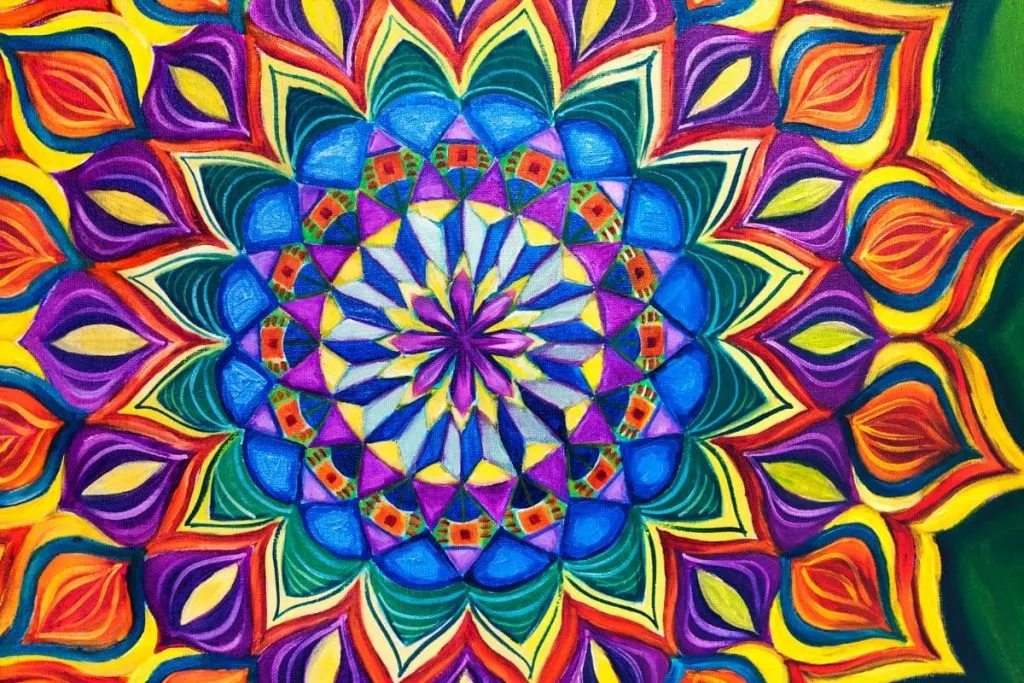
Learn what different colors of mandala present:
- Red – for strength, passion, and energy.
- Green – for psychological healing, ability, love, nature, and care.
- Pink – for love and femininity.
- Purple – with all spiritual things.
- Yellow – for learning, wisdom, laughter, and happiness.
- Orange – for creativity, transformation, self-awareness, and intuition.
- Blue – for emotionality, inner peace, and meditation.
- White – for spiritual focus.
- Black – for mystery and individuality.
What Do Geometric Shapes Present In Mandala Art?
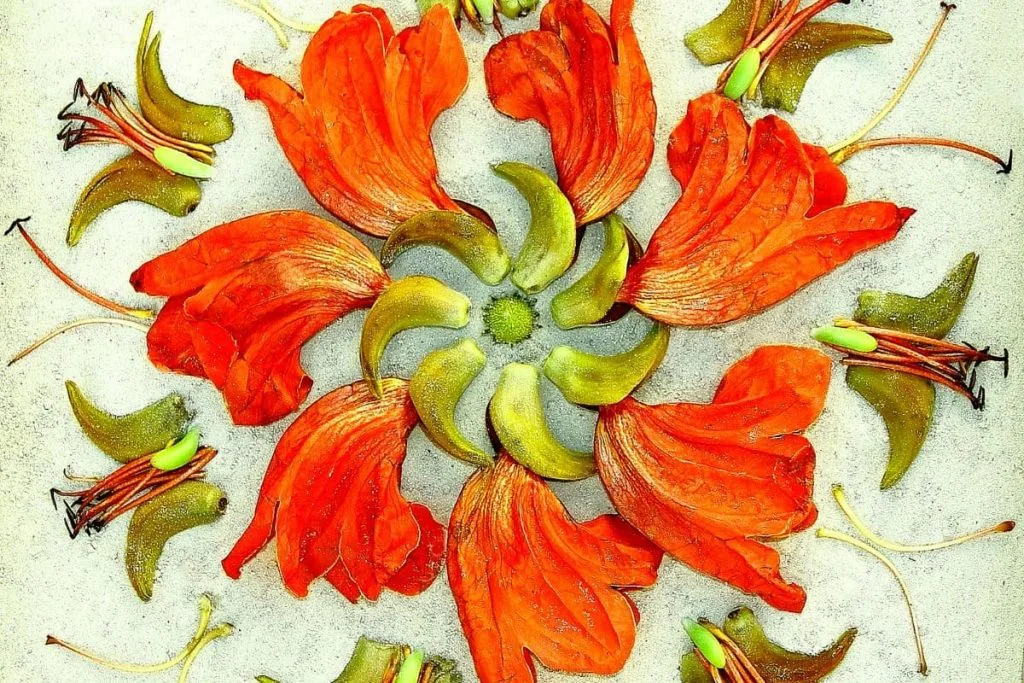
The arrangement of geometric symbols expresses the multidimensionality of the mandala.
These levels are symbolized by concentric circles that are more or less distant from the center. In certain cases they are squares within squares.
The mandala is an image of the world in which the vertical and horizontal movement of divine laws takes place, a kind of cross in space and time, showing the hierarchization of the universe into different worlds, or dimensions.
Circle Mandala Designs Meaning – Mandala Flowers Meaning
The circle as a symbol is related to time and space – concepts that carry physical and metaphysical meaning.
Related to time, the circle is a symbol of movement and cyclicality. In the Far East, it is often in association with the symbol of the wheel.
Related to space, the circle is a symbol centered on a center or axis. The place from which the world is created and expanded.
The center, that is, the axis is at the same time a place of communication with the higher dimensions of reality, which manifests there vertically, while its influence spreads horizontally, towards the manifested world.
The horizontal influence of the divine world is symbolized by the four main sides of the world. According to which the other symbols of the mandala are usually arranged.
Square Mandala Design Meaning – Mandala Flowers Meaning
The symbolism of the square is in connection to the symbolism of the circle because it signifies the “solidification” of the circle, the fixation of a certain event in a certain space through the passage of time. In mandalas, this usually represents lotus petals forming within a circle or triangles within a square.
Other Shapes Of Mandala Flowers Meaning
Overlapping circles and geometric mandalas such as horizontal lines or vertical lines are other less popular shapes of mandalas.
The Mandala circle is still the most popular mandala shape since it explains how the life mandala consists of deeper meaning in anything, but we also somehow end up in circles.
Each complex geometric design and geometric patterns has their own spiritual awakening, and sacred meaning, they bring spiritual enlightenment, and they show personal or spiritual growth.
Spiritual energy is seen in a circular shape, circular nature, geometric figures, Egyptian temples, and even in the human body. That is what matters the most in conclusion.
9 Popular Mandalas Flowers And Their Symbolism
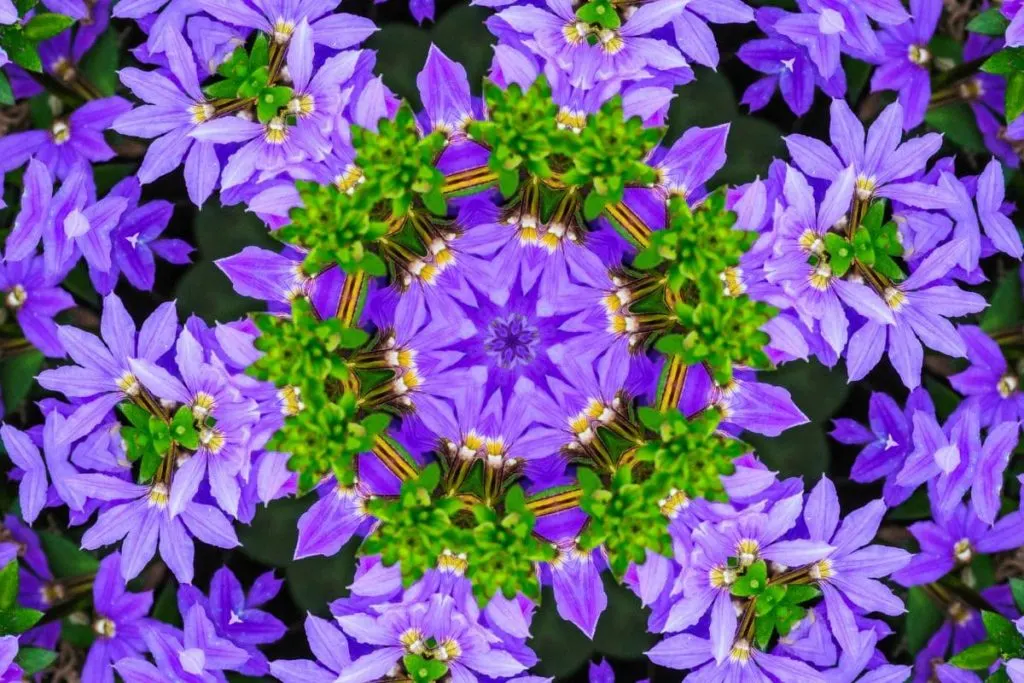
You don’t have to choose the one that is most beautiful to you, symmetrical or under an interesting number, personality reading by mandalas relies on instinct.
Mandala is a Sanskrit word for a sacred circle, and almost all ancient cultures respected the so-called power of the circle. So let’s see what some of these mandalas mean.
1. Lotus Flower Mandala
This mandala rules by debt and represents the perfect balance of yin and yang, masculine and feminine energy.
These lotus flower mandalas tell the one who chose it that he needs a balance in his life – between work and private life, own and other people’s expectations, health, and obligations.
Lotus mandalas message is to pay more attention to yourself and the necessary rearrangement of priorities.
2. White Lily Flower Mandala
This mandala represents a deep need for healing to the one who chooses it. This means that it is time to come to terms with past events, to forgive things that hurt us, or to cut relationships that no longer make sense and we are not even aware of how much they are hurting us.
Also, the message of these flower petals mandala is that you should pay less attention to the outcome of something, and more to the current situation.
3. Orange Marigold Mandala
This mandala symbolizes those who have excellent orientation and the ability to search for light in the dark.
The one who chooses it has the need to protect himself from other people, traps, and imposed opinions, and in the decisions before him he should rely on his inner wisdom, that is, intuition.
Also, he says that you should not close yourself off to new ideas, but watch, listen and absorb them carefully.
4. Daffodil Mandalas
This mandala is guided by the element of water. It says that everything we feel, love, and fear shapes who we are.
Her symbol is a dog, which signifies unconditional teaching, companionship, and a sense of belonging.
If you have chosen this mandala, then the spirit is telling you that you should stop ignoring the relationships that are bothering you and forgive others and yourself, and say goodbye to negative feelings in order to move on to better things.
5. Elephant Mandala
This mandala is under the authority of the air element, and its symbol is an elephant, which represents empathy, compassion, and understanding.
The one who chooses this mandala is reminded that he should connect with others and understand them more because then they will also understand him better.
Ask yourself if you behave compassionately towards others or judge them harshly and critically, and how much negativity this attracts into your life.
6. Red Begonia Mandala
The symbol of this mandala is an eagle that represents strength, as a protective shield against the misfortunes and sorrows that life brings.
If you have chosen this mandala, then your spirit expresses the need to strengthen yourself, to build your foundations in order to walk more decisively through life.
This is achieved through strengthening faith in oneself, but also accepting possible bad outcomes as a necessity of life.
7. Pink Dahlia Mandala
The one who chooses this mandala has a need for protection, which usually depends on other people.
In moments of fear, we should be strong enough to ask for help and allow someone to take care of us because this deepens the relationship. Also, this mandala can encourage you to confront someone, that is, to believe in your strength.
Black Dahlia Flower Meaning: Mysteries Behind Dahlia Flowers
8. Dandelion Mandala
This mandala reminds us that sometimes in life we need to rest, but also adapt in order to gather energy.
If you chose this mandala, then it is a message to your spirit to adapt to the big change that is coming, and before that, you need to understand what is holding you back and then get to know yourself in a “new skin”.
9. White Rose Mandala
The one who chooses this mandala should isolate himself a little from people and listen to his inner voice in any problem that is in front of him.
Regardless of what anyone thinks, you should do it your way and not look back, because more often than not, people complain about what we haven’t tried.
What Does Traditional Mandala Flower Looks Like?
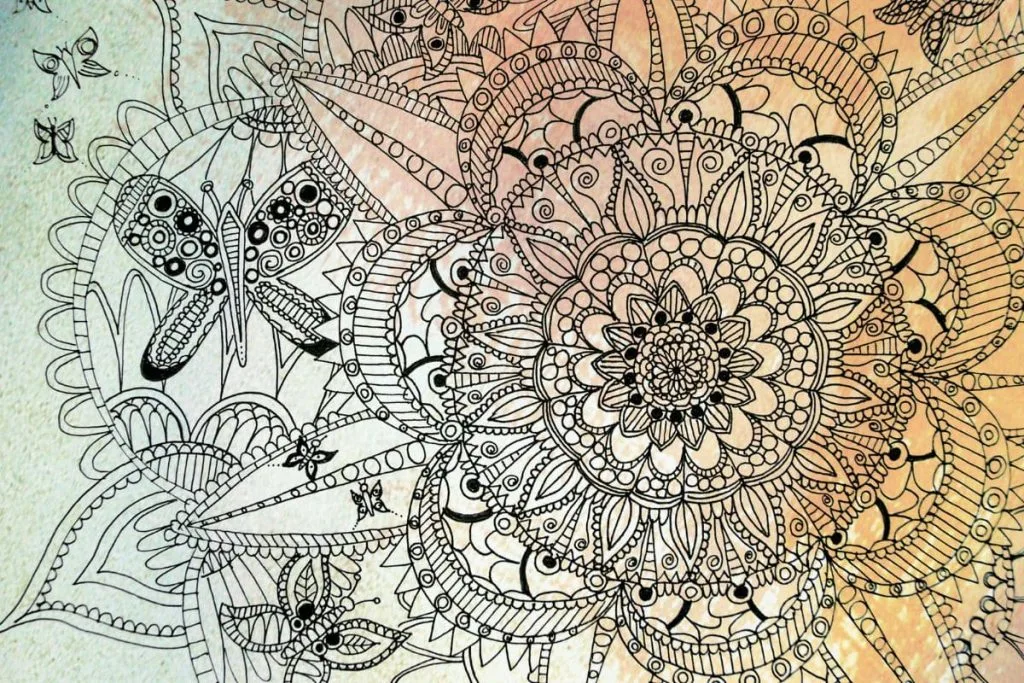
Wishes carried by wind and water until their fulfillment. Multicolored sand or powder of semi-precious stones. Image created by precise mathematical measurement. It’s all a traditional mandala.
A traditional Indian technique that delights with its color and refinement. Traditional mandalas are paintings in the sand. They are sand mandalas, i.e. made in multi-colored sand, then on architecture, and only later on drawings.
How Do Modern Flower Mandalas Look Like?
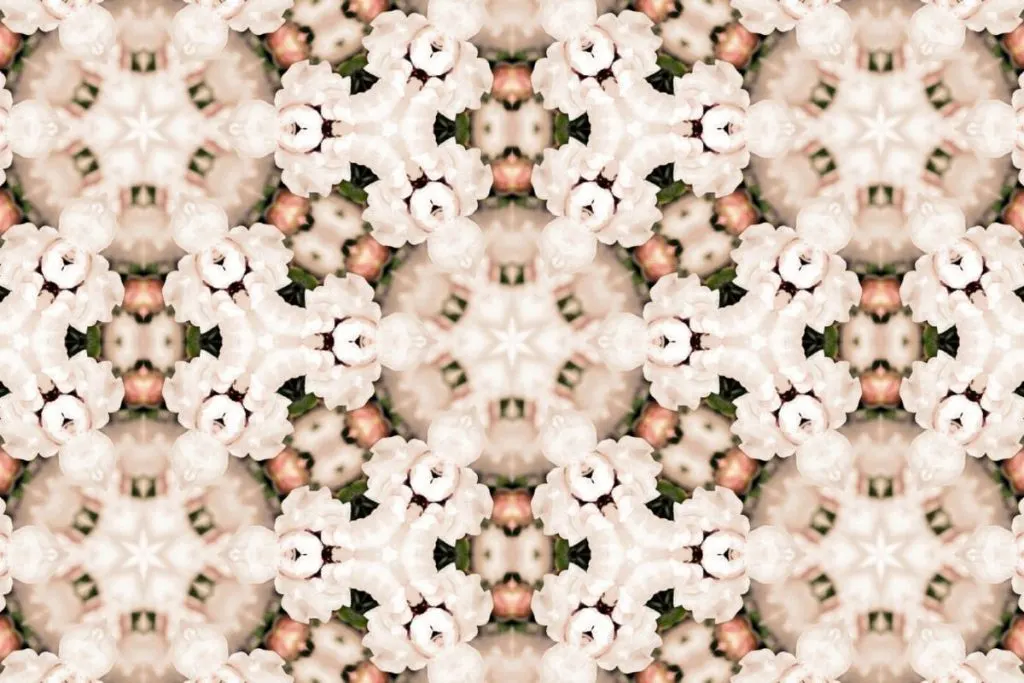
Today’s mandalas are certainly different from the others we are used to. You can find Mandala flowers today everywhere.
Drawings, paintings, rugs, carpets, mobile phone covers, books, and notebooks, unlike the traditional ones, have countless shapes and colors. Most of them are round numbers with elongated ends and decorations in more than ten colors.
Use Of Mandala Flower
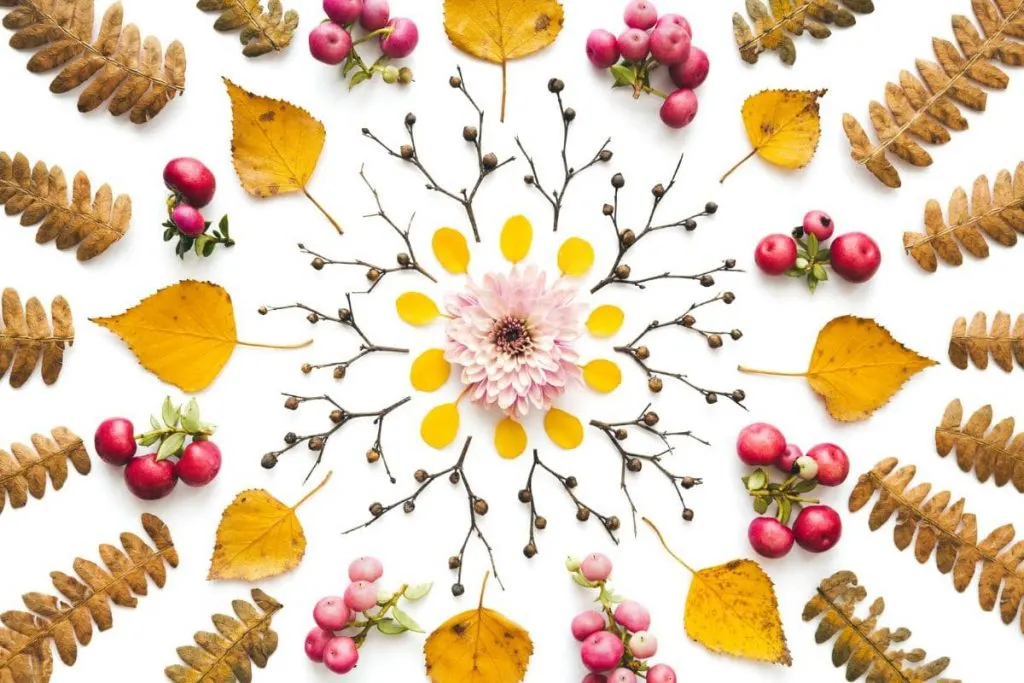
A mandala is not just a flower that will relax you when drawing and coloring. Its meanings are deep, and artistic and mean a lot. Then let’s see what this flower represents in other spheres of life and where it is in use.
Use Of Mandala Flower As A Meditation Tool
Let the mandala absorb all the attention you have given it, and you slowly but surely step deeper and deeper into every curve and pattern.
The longer you observe the mandala, the more aware you will become of the feeling of light, and the more intense your intuitive thoughts may become. Then it’s time to relax and let all those feelings come to you.
Use Of Mandala Flower In Different Cultures
Eastern cultures have used special mandalas for visual meditation for centuries. For example, the Tibetan Kalachakra is perhaps one of the most famous mandalas that symbolically depicts the entire structure of the universe.
Circular shapes can also be found in the structure of the ancient Stonehenge in England or in the labyrinth from the 13th century. Located on the floor of Chartres Cathedral in France.
Seekers of the spiritual have always created various mandalas to convey holiness through pictorial representation. While the circle in general has often been invoked in various rituals and artistic representations to express transcendence, mindfulness, and good physical and mental health.
Use Of Mandala Flower In Artistic Expression
Often in art, a circle is depicted with eight rays, and this expresses the mutual skipping of these four functions of consciousness so that four non-adjacent functions are found together, for example, thought colored by feeling or intuition.
Jung states in the fine arts of India and the Far East a circle with four or with eight rays is common a pattern of religious images that serve as stimuli for thought. The completeness symbolized by the mandala is often associated with creatures from myths and legends.
In a Tibetan painting depicting the Buddha’s birth, the Buddha’s first steps are depicted on a cross made of round flowers.
Use Of Mandala Flower In Psychology
The famous Swiss psychiatrist, Carl Jung, is considered to be the person responsible for introducing the Eastern concept of the mandala into the Western system of thought because he believed that this symbol represents a person’s overall personality, that is, the self.
While studying Eastern religion, he also researched the psychological effects of mandalas on man. With his patients, he noticed that they often spontaneously draw circles, and in his “Red Book” he wrote:
The serious pattern imposed by a circular display of this kind compensates for the disorder and confusion of the psychic state – more precisely, by creating a central point to which everything else is attached.
Jung often used mandalas in his psychotherapy, which helped him determine emotional disorders and work on the integrity of the personality.
Use Of Mandala Flower For Tattoos
Mandala tattoos are tattoos that seek balance in the person who tattoos them and that can have a great meaning for those who reflect it on their skin.
These types of tattoos are characterized by geometric shapes that bring balance to every centimeter. Mandalas can symbolize unity and harmony.
A mandala design can be unique, so it can have different meanings, depending on the life, experiences, or thoughts of the person who wants to make this type of tattoo. Above all, they usually symbolize inner peace, spirituality, soul balance, and paths to follow to find spirituality or calmness.
How Are Mandalas Presented In Tibetan Tradition?
Mandala in the Tibetan tradition is an imaginary and temporary meditation guide. With various combinations of circles and squares, she expresses the spiritual and material world and the dynamics of the connections that unite them on the triple cosmic, anthropological and divine plane.
In the ritual, it functions as a stronghold of the deity whose cosmic symbol it is. Through the magic of symbols, the mandala is at the same time an image and the initiator of spiritual ascent, which is a consequence of the increasingly strong interiorization of life.
Popular FAQs About The Mandala Flowers Meaning
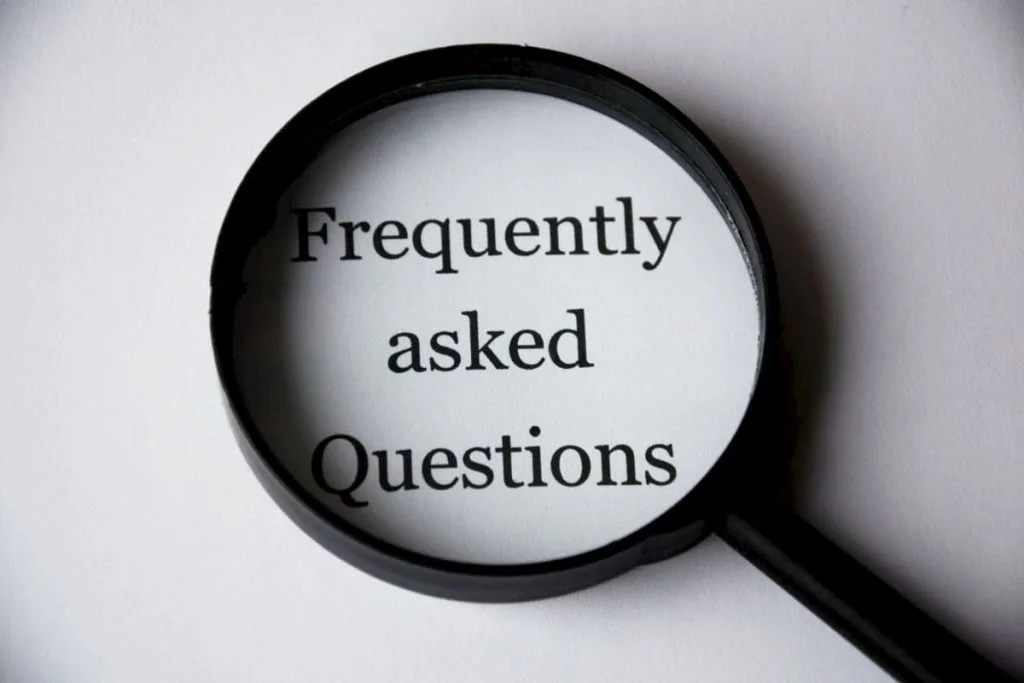
Below we will answer your popular FAQs about the mandala flower meaning. Let’s see what did we prepare for you in this section.
What Does Hindu Mandala Mean?
By means of the rite of orientation, the traditional Hindu mandala is the determination of the central sacred space, namely the altar and the temple. It is the cosmic symbol of Purusha, the Divine Presence at the center of the world.
It is shown as a quadrilateral divided into smaller ones. The simplest has four or nine fields, and the most common are mandalas with sixty-four or eighty-one fields. The basic square of the center is the place of Brahma.
The concentric array of quadrilaterals is connected to the solar and lunar cycles. Although this scheme is found in the plan of temples in India, for example in Khajuraho, it can also be found outside India, in Angkor for example.
What Does Tantric Mandala Mean?
The tantric mandala is derived from the same symbolism. It is painted or drawn as a base for meditation, drawn into the ground for initiation rites.
It is, in essence, a quadrangle placed towards the four gates, containing circles and a lotus and studded with images and symbols of the deity.
The gates of the outer belts have guardians: successive passage through the gates corresponds to successive stages in spiritual development, in the stages of initiation, until reaching the center, the undifferentiated state of Buddha-Chakravarti.
The specific flower mandalas can also be interiorized, contained in the cavity of the heart. Temples like Borobudur in Java express very precisely what the progression is within the mandala.
Did Indians Know For Mandala?
Powerful symbolism is also found in the American Indians, their sand paintings, and medicine wheels.
The medicine wheel symbolizes the universe, change, life, death, birth, and learning. The Great Circle is the abode of our body, our mind, and our heart.
Although it has many points in common with Tibetan mandalas, American Indians never used the word mandala for their sacred circles.
It’s believed that they also used to make their own mandala-sand mandala since they didn’t have any materials. Spiritual growth was much bigger then than it is today.
They didn’t have a specific flower mandala, and it’s not found that they did any other design that those we know. There’s a record made on white or yellow daffodil mandalas made by old Indian tribes.
Final Thought On The Mandala Flowers Meaning
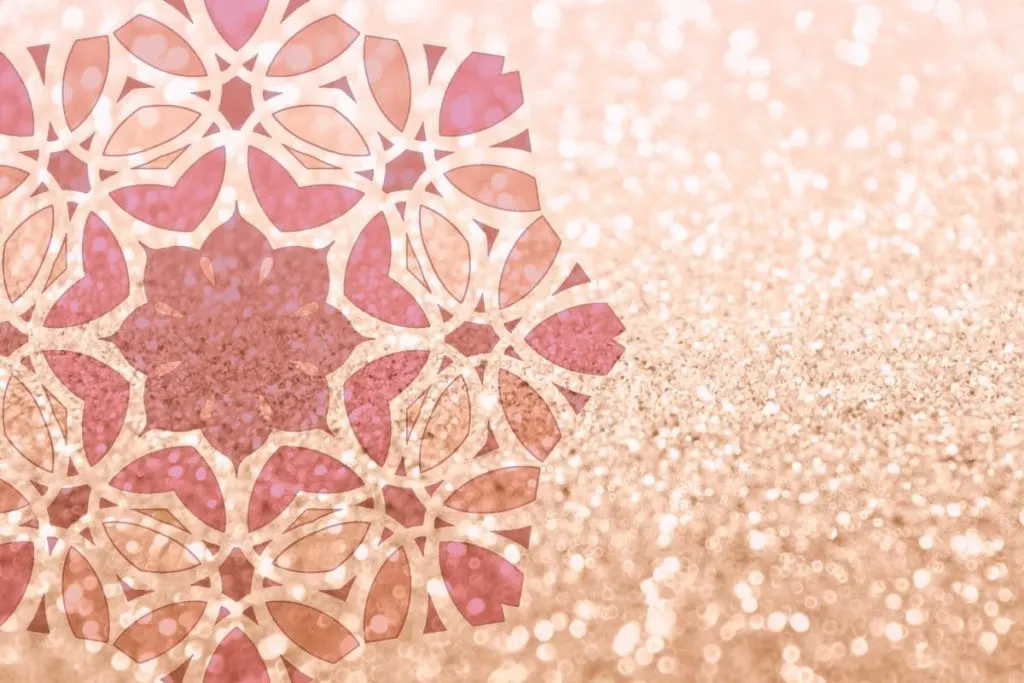
In today’s article, we learned everything about the mandala flower meaning. Mandala makes a spirit world much different and more special with all its colors and symbols, right?
Those who know how to use these symbols and colors correctly can notice that mandalas enrich the human soul.
Mandala brings joy, calmness, laughter, and spirit into us. A deeper understanding of the mandala is a better understanding of ourselves and the spiritual world.
I hope that today you learned more about colored mandalas and that you will make your own in the future. That would be all for today, see you here soon with similar topics.

